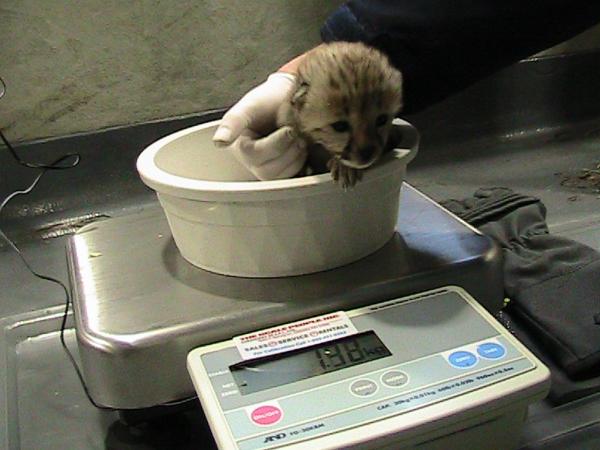Foster Family Created to Help Baby Cheetahs Survive


The Smithsonian Conservation Biology Institute welcomed two furry new additions earlier this month. Two cheetah cubs were born at the Virginia facility on Dec. 6 and Dec. 16 to two different mothers.
Although zoo staff say the tiny cats are now doing well, it was rough going for the cubs at first. Both babies were single births, a circumstance that can be problematic.
When cheetah mothers give birth to only one cub, they can't produce enough milk to keep the baby alive. In the wild, cheetah mothers will typically let these single babies die. The mothers will then breed again soon thereafter. But thanks to some human intervention, both zoo cubs have survived.
Adrienne Crosier, SCBI cheetah biologist, said that when zoo staff realized the first cub was born alone, they acted quickly, removing the cub and hand-rearing it for 13 days. When Zazi, the second cheetah to give birth, also produced only one cub, "we decided it was the perfect opportunity to give both cubs a chance at survival as one litter under her care without any additional interference by us," Crosier said. "Only a few institutions in North America have ever successfully cross-fostered cheetah cubs and this is a first for SCBI."
This newly created litter of two will likely help stimulate milk production from Zazi. Indeed, researchers have observed both cubs nursing from the 9-year-old mother cheetah.
These births are especially significant, as cheetah births in zoos across the country have dwindled over the past five years, worrying animal care managers about the sustainability of the North American population in human care. More than one-third of the female cheetahs that are part of a national effort to breed the big cats are older, and researchers have found that after eight years of age they do not reproduce well.
SCBI is trying to address the dearth of cheetah cubs through a number of research projects, and SCBI scientists are even studying whether they can harvest eggs from an older female, fertilize them and then transfer them to a younger surrogate female.
Get the world’s most fascinating discoveries delivered straight to your inbox.
There are only an estimated 7,500 to 10,000 cheetahs left in the wild, and the International Union for Conservation of Nature considers cheetahs a vulnerable species .
In their natural habitats, cheetah cubs suffer a 70 percent mortality rate -- compared to a 20 percent mortality rate under human care -- and 33 cheetah cubs (including the cubs born at SCBI this month) have been born in North America this year and have survived.
"We are proud to help find a solution to maintaining a sustainable captive cheetah population, said Steve Monfort, director of SCBI. "This is only our first year of having breeding pairs at SCBI, so it's really exciting that we have produced two cubs. The more that we understand about our cheetahs, the more we can do for those in human care throughout North America and for those in the wild."




